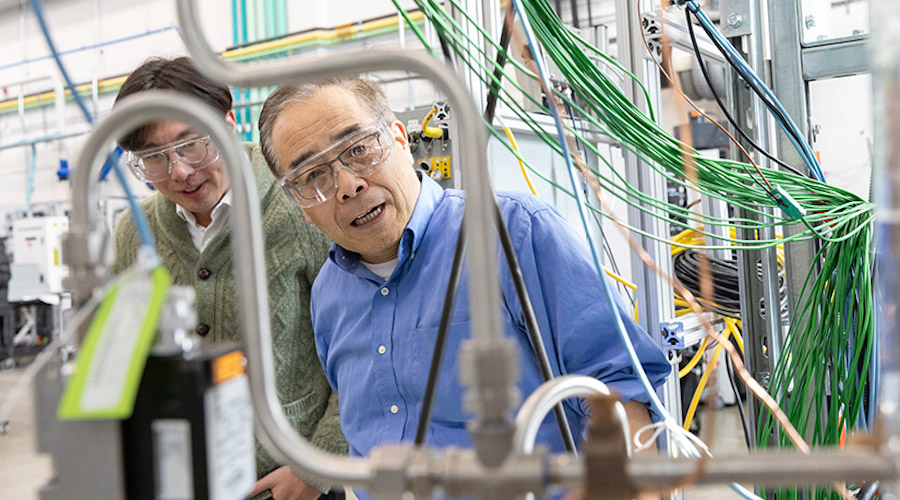
A laboratory-scale prototype validated the technology and allowed researchers to create a computer model that shows a commercial-scale device would retain more than 95% of its heat for at least five days.
“Lithium-ion batteries have really cornered the market at two to four hours of storage, but if we want to achieve our carbon reduction goals, we will need long-duration energy storage devices—things that can store energy for days,” Jeffrey Gifford, a postdoctoral fellow at NREL who is involved in the development, said in a media statement.
“Particle thermal energy storage doesn’t rely on rare earth metals or materials that have complex and unsustainable supply chains. For example, in lithium-ion batteries, there are a lot of stories about the challenge of mining cobalt more ethically.”
In addition to TES, Gifford’s expertise is in computational fluid dynamics. That knowledge is important because the sand needs to flow through the storage device. Other TES media include concrete and rocks, which can easily retain heat but remain solidly in place.
“Your heat transfer is much higher and much quicker and much more effective if you’re moving your media,” Gifford said.
Lower cost
TES also has another key advantage: the cost. Head researcher Zhiwen Ma has calculated sand is the cheapest option for energy storage when compared to four rival technologies, including compressed air energy storage (CAES), pumped hydropower, and two types of batteries.
CAES and pumped hydropower can only store energy for tens of hours. The cost per kilowatt-hour for CAES ranges from $150 to $300, while for pumped hydropower it is about $60. A lithium-ion battery would cost $300 a kilowatt-hour and only have a capacity to store energy from one to four hours. With a duration lasting hundreds of hours, sand as a storage medium would cost from $4 to $10 a kilowatt-hour. To ensure low cost, the heat would be generated using off-peak, low-price electricity.
Molten salts are already in use to temporarily store energy, but they freeze at about 220 degrees Celsius and start to decompose at 600 degrees Celsius. The sand Ma intends to use comes out of the ground in the Midwest of the United States, does not need to be kept from “freezing,” and can retain considerably more heat, in the range of 1,100 C that can store heat for power generation or to replace burning fossil fuels for industrial heat.
“This represents a new generation of storage beyond molten salt,” Ma said.
Expanding the amount of energy that can be stored in sand, on the other hand, is as simple as adding more sand.
“That’s a marginal cost to add additional storage capacity,” said Craig Turchi, who is also involved in the research. “We need storage ranging from minutes to months. Batteries worked really well in the minutes-to-hours space in terms of how they scale. And when you get into months of storage, you’re usually looking at making a fuel like hydrogen to provide that long-term storage. But in the period between multiple hours and two weeks, there’s not a good fit right now. Hydrogen is too expensive for that. Batteries are too expensive for that.”
The components needed to convert the superheated sand back to electricity do require an upfront cost. “But once you’ve paid for that,” Turchi said, “if you just want to have more duration for your power it’s much, much cheaper to add more sand than the alternative, which is to keep adding batteries.”




